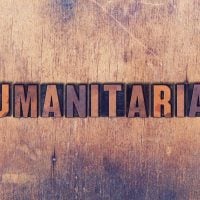Deadline: 31-Aug-2025
UNHCR is seeking expressions of interest from qualified partners to support the implementation of the Integrated Site Planning (ISP) Approach for Rohingya refugees in Cox’s Bazar and Bhasan Char, Bangladesh.
Eight years into the crisis, shelter and camp infrastructure in Cox’s Bazar remain largely temporary. While the Government of Bangladesh approved Temporary Safer Shelters at the end of 2025—using more durable materials to improve safety and reduce maintenance costs—the areas face worsening conditions due to climate vulnerability, funding shortfalls, and congestion from over 120,000 new arrivals, bringing the total population to more than 1.1 million. Many still live in makeshift shelters made of bamboo and plastic sheets in deforested hillsides prone to flooding and landslides. Over 58,000 households remain in high-risk zones, where temporary shelters exacerbate displacement, protection issues, and asset loss during emergencies. The Kutupalong mega camp, spanning over 22 square kilometers, is the largest refugee settlement in the world and lacks proper site planning, resulting in environmental and safety hazards.
UNHCR’s ISP Approach integrates protection and environmental considerations into participatory planning to address these challenges. The Temporary Safer Shelter (TSS) prototypes, approved by the government, are fire-retardant, weather-resistant, and more durable. In 2024, a major fire in Camp 5 destroyed 800 shelters and damaged 120 facilities. To minimize such risks, TSS rollout will follow a phased, risk-informed plan that focuses on the most vulnerable areas.
Meanwhile, Bhasan Char offers an alternative through purpose-built, disaster-resilient infrastructure. Despite its improved design, maintenance is needed—ranging from shelter repairs to updates on public facilities and electrical systems. Its isolation underscores the importance of adaptive, community-led planning and integrated approaches. Shelter efforts there and in Cox’s Bazar are increasingly owner-driven and community-led, presenting opportunities for refugee-led livelihoods and skills transfer.
Partners will support UNHCR by assisting with site planning, shelter development, emergency response, and infrastructure maintenance through protection-sensitive and community-based methods. They will help strengthen community leadership, promote refugee self-reliance, and collaborate on environmental initiatives like watershed management. Partners will also deliver technical guidance for community-led shelter construction and repairs, develop and maintain public infrastructure and shared facilities, and coordinate planning efforts across government and agencies.
UNHCR emphasizes access to renewable energy and lighting as key to safety and resilience. Partners will install solar-powered lighting in communal and operational facilities, ensuring these services function during emergencies through monitoring and upkeep.
By 2029, the ISP efforts aim for forcibly displaced people to live in safe, healthy environments while being actively involved in their community’s service delivery and building resilience. Success will be measured by access to safe, securely planned settlements, improved shelter and infrastructure in both sites, and availability of clean and renewable energy in Cox’s Bazar and Bhasan Char.
This initiative is situated in Chittagong, Bangladesh, focusing on shelter readiness, settlement planning, and risk reduction.
For more information, visit UNHCR.









































